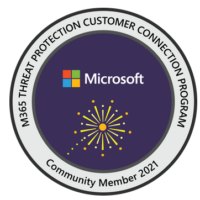Feb 16, 2020
Recover Keys – Part 1 – Scanning a Local Machine
Recovering License Keys
I ran into an issue when trying to upgrade a windows 7 PC back in 2019 before Windows 7 went EOL. A decision was made to start a complete fresh install of Windows 10 instead of upgrading from Windows 7 to 10.
However, it came with a caveat that I would have to reinstall many tools all over again. For some of them, I no longer had a stored copy of the license key(s) laying around, or stored digitally any longer. So it got me thinking, if there was a way to recover these license keys.
Now, I could poke around and find the answers combing through the Registry or disk. However, I thought I’d speed things up by using existing tools that get the job done for you.
Nirsoft (a well-known website for recovering all kinds of artifacts from your PC) used to have a free tool that would search the registry for license keys. The tool was called “ProduKey”, and can be found here:https://www.nirsoft.net/utils/product_cd_key_viewer.html
But, upon trying to download the file, it gets redirected to another website called “recover keys” https://recover-keys.com/en/aboutus.html
I’m not quite sure what the relationship between them is? That might be something I get an update on at a later time.
The tool (recover keys) covers a vast amount of software they can detect and find license keys on. If you wish to see if your tool is supported check out their full list here: https://recover-keys.com/en/supported.html
I decided to try to download the tool and use the demo version first, before I got a full license to try it out. I’ve decided to make a post and review the product.
Running Recover Keys
In this use case, the plan is to run the recover key application to find license keys on a local machine.
Load up the app and click on the “Scan local computer” option.

From there the app will search and scan for license keys. If you are using the DEMO version, as I did early on. It will list partial keys and give you “some” information to let you know if it’s worthwhile to purchase the full version of recover keys.

In my case (as shown below), I saw the extensive list of the license keys that were found on my system. So, it made me realize it would be worthwhile to use the full version.

Once I got a valid license. I was able to re-run the scan, which now displayed all of license keys it could find and detect. *I’ve blanked them out in the images for confidentiality*


Another thing I really liked about the tool was that it could also build up a list of all installed software.
Technically, we could get this information from Windows itself using the “add/remove programs” or “installed programs” options, or even throw PowerShell. But, it was a good way to see what tools were installed on the local machines. And, which tools may need to be re-installed when Windows 10 is installed.

Once the scan is done, recover keys lists multiple ways to export the results out. In my case, I exported it to an excel spreadsheet, but you can see below in the screenshot that several different options exist.

A sample of the spreadsheet that was exported with the product names and license keys. I now have a way to back up my license keys. And, won’t have an issue trying to find these keys when trying to re-install some of these apps on Windows 10.

And that’s it! Easy as that, and it keeps things simple and easy.
If you want to see part 2 of my review, which focuses on scanning machines via the network. Then check it out here –> https://stealthbay.com/recover-keys-part-2-scanning-devices-on-the-network
No Responses to “Recover Keys – Part 1 – Scanning a Local Machine”
Trackbacks/Pingbacks
- Recover Keys – Part 2 – Scanning Devices on the Network - StealthBay - […] If you haven’t read Part 1 of using Recover Keys (scanning a local machines) you can check it out…











 My name is Harry Taheem
I am a Cyber Security Engineer.
My aim is to post things I learn or find interesting and allow others to hopefully gain some more insight. I also plan on posting general IT related issues, as I’d like
My name is Harry Taheem
I am a Cyber Security Engineer.
My aim is to post things I learn or find interesting and allow others to hopefully gain some more insight. I also plan on posting general IT related issues, as I’d like 
Leave a Reply